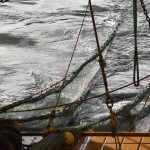As per a new study from NOAA, The Billfish Foundation, and University of Miami Rosenstiel School of Marine and Atmosphere Science, billfish and tuna might be more vulnerable to fishing pressure because of shrinking habitat. An expanding zone of low oxygen, known as a hypoxic zone, in the Atlantic Ocean is encroaching upon these species’ preferred oxygen-abundant habitat, forcing them into shallower waters where they are more likely to be caught.
Scientists states that they had tagged 79 sailfish and blue marlin with satellite tracking devices in the western North Atlantic, off south Florida and the Caribbean; and eastern tropical Atlantic, off the coast of West Africa. Researchers confirmed that billfish prefer oxygen rich waters closer to the surface and will actively avoid waters low in oxygen.
Dr. Eric Prince, NOAA’s Fisheries Service research fishery biologist, said that the hypoxic zone off West Africa, which covers virtually all the equatorial waters in the Atlantic Ocean, is roughly the size of the continental United States, and it’s growing. As the climate changing fast and global warming accelerating the zone increases which further reduces the available habitat for these fish.
The shrinking availability of habitat and resulting increases to catch rates are important factors for scientists to consider when doing population assessments. Researchers forecast that a rise in ocean temperatures will further increase the expansion of hypoxic zones in the world’s oceans.








